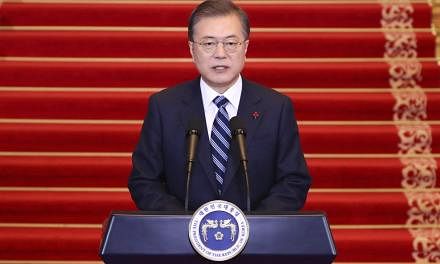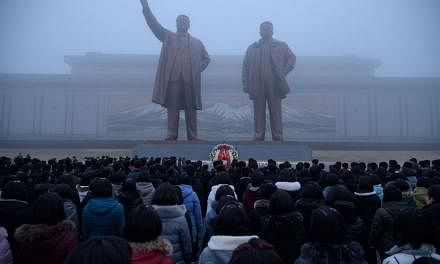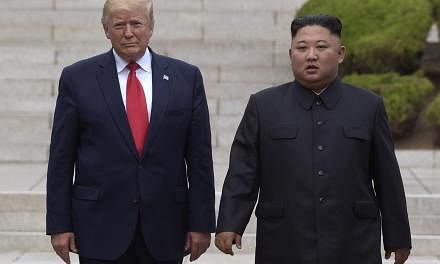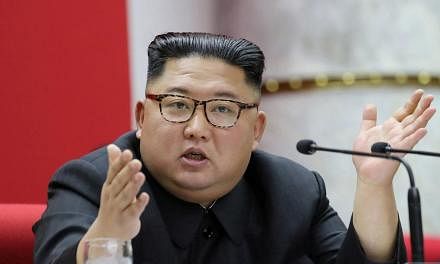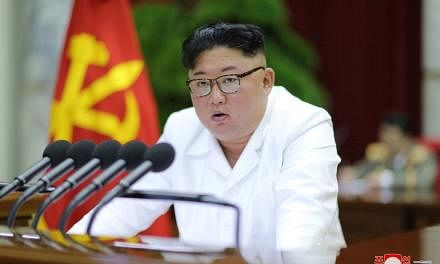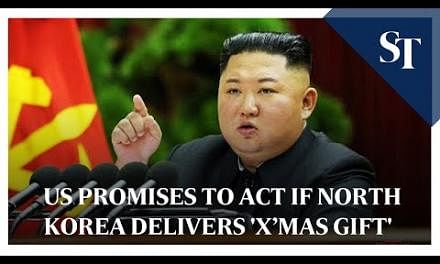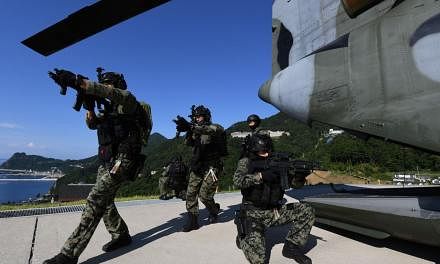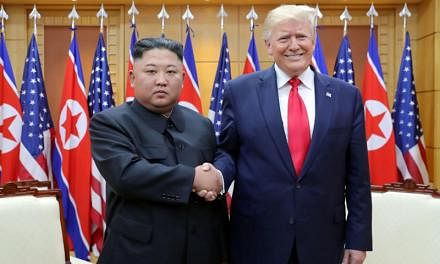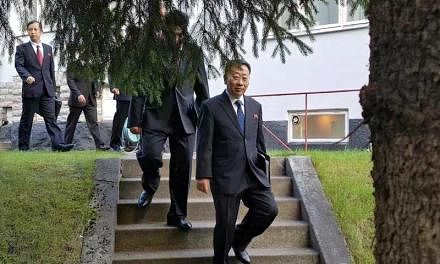SEOUL (AFP) - US President Donald Trump is widely expected to visit the Demilitarised Zone (DMZ) that divides South Korea and the nuclear-armed North this weekend as part of his trip to Seoul following the G-20 meeting.
Mr Trump on Saturday (June 29) made a surprise invitation to North Korean leader Kim Jong Un to meet for a historic handshake at the DMZ.
The spectacular invitation on Twitter caught observers by surprise. If Mr Kim accepts, it would be the third meeting between the leaders of the two former enemies amid efforts to denuclearise the Korean peninsula.
The DMZ is the finishing line of the 1950-53 Korean War, where South Korean forces backed by a US-led UN coalition fought to a standstill with North Korean and Chinese troops.
Here are some questions and answers about a place widely referred to as the world's last remaining Cold War frontier.
WHERE IS IT?
The 4km-wide DMZ runs for 250km across the Korean peninsula, around 50km north of Seoul and 200km south of Pyongyang.
At its centre is the Military Demarcation Line (MDL), where the front line lay when the ceasefire stopping Korean War hostilities was signed in 1953.
Under the agreement both sides agreed to pull back their forces 2,000m. To the south, Seoul has established a further buffer zone of varying width where civilian access is restricted.
WHAT IS IT?
A barrier separating North and South, heavy weaponry is banned from within the DMZ. Patrols are allowed but cannot cross the MDL and no more than 1,000 people from each side are permitted inside the zone at any one time. It is also littered with minefields.
The areas immediately outside it are some of the most highly fortified places on earth, bristling with artillery, military camps, and more minefields.
WHAT DOES IT LOOK LIKE?
With the DMZ a "no man's land" and minimal human presence for more than half a century, much of the zone itself is lush forest, renowned as an ecological refuge for rare species of flora and fauna whose habitat elsewhere has been destroyed by development.
An Asiatic black bear was photographed there last October, according to Seoul's environmental ministry.
Within the zone, watchtowers poke up from hilltops, and barbed-wire fences line its edges.
WHO HAS BEEN THERE?
The US and South Korea have been in a security alliance for decades and a trip to the DMZ is something of a ritual for visiting US leaders.
Then President George W. Bush went in February 2002, a month after he named North Korea as part of his "axis of evil".
The last to go was Barack Obama in 2012, and then US Vice-President Mike Pence went to the border in April 2017 amid heightened tensions with the reclusive state.
President Donald Trump tried to visit seven months later but his helicopter was forced to turn back due to heavy fog.
Most notably, South Korean President Moon Jae-in and North Korean leader Kim Jong Un held two of their three summits last year at Panmunjom, a "truce village" within the DMZ.
WHAT IS PANMUNJOM?
Also known as the Joint Security Area (JSA), Panmunjom is a series of buildings centred on several blue UN meeting huts right on the MDL, which have become emblematic for the division of the Koreas.
The 1953 armistice was signed in a building on the northern side, and the JSA was the site of the 1976 "Axe Murder Incident", when two US military officials seeking to cut down a tree that obscured visibility were hacked to death by North Korean soldiers.
It is the only place in the DMZ where soldiers from South and North Korea stand face to face, although under the terms of an inter-Korea agreement Moon and Kim signed at their third summit last year in Pyongyang, they no longer carry arms.

